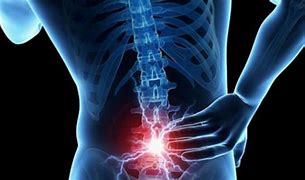“Spinal displacement” commonly referred to as “lumbar slip”, describes a condition affecting the lower back region. This issue arises when the vertebrae in the lumbar spine shift or herniate, often leading to discomfort. Individuals may experience pain that intensifies with certain movements or after prolonged periods of standing. Treatment generally involves rest, physical therapy, exercise and in rare cases, surgical intervention. If you are experiencing symptoms of spinal displacement, it is crucial to consult your physician.
Contents
- What is Spondylolisthesis?
- What are the symptoms of Spondylolisthesis?
- What are the Types of Spondylolisthesis?
- How is Spondylolisthesis Treated?
- Conclusion
What is Spondylolisthesis?
Spondylolisthesis is a condition occurring in the lower spine typically characterized by a misalignment of the vertebrae. Medically known as Spondylolisthesis it is defined as the forward displacement of one vertebrae over the one beneath it. This condition can arise from various causes and often presents with symptoms such as lower back pain, numbness or weakness in the legs.
While Spondylolisthesis is more common in certain age groups, it can manifest at any age. Symptoms vary from person to person and the severity can differ depending on the degree of the slip. Some patients may experience significant back pain, while others might feel numbness or weakness in their legs.
The treatment for Spondylolisthesis is determined by the degree of the displacement, the symptoms presented and the patient’s overall health. Treatment options may include rest, pain management, physical therapy exercise programs, posture training and in some cases, surgical intervention. As the treatment approach varies for each individual, it is essential to seek professional medical advice if you exhibit symptoms. Early diagnosis and appropriate treatment can effectively manage lumbar slip and alleviate its symptoms.
What are the Symptoms of Spondylolisthesis?
The symptoms of Spondylolisthesis can vary from person to person and may differ in intensity depending on the degree of displacement. Some common symptoms include:
- Lower Back Pain: This is the mots frequently observed symptom. Spondylolisthesis often leads to chronic or recurrent pain in the lower back region. While the pain is primarily felt in the lumbar area, it may occasionally radiate down to the legs.
- Back Pain: Spondylolisthesis can also cause pain in the lower back, which may spread around the spine and worsen over time.
- Numbness and Tingling in the Legs: Compression of the spinal cord or nerve roots can lead to sensation of numbness, tingling or weakness in the legs. This symptom is typically associated with the impact of the slip on the nerves.
- Leg Weakness: Pressure on the nerves can result in weakness or numbness in the legs, affecting daily activities and walking ability.
- Difficulty Walking: In advanced cases of Spondylolisthesis, nerve compression can lead to difficulties in walking. This issue is especially noticeable when covering long distances or walking uphill.
- Postural Changes: The displacement in the spine can affect the body’s natural posture. For instance, a noticeable lordosis (inward curvature) or other postural alterations may be observed in individuals with Spondylolisthesis.
The symptoms of Spondylolisthesis often worse over time and may intensify with physical activity or prolonged standing However, the severity of symptoms can vary greatly; some individuals may experience mild discomfort, while others might face more pronounced symptoms.
If you experience symptoms of Spondylolisthesis or suspect you might have them, it is crucial to consult a healthcare professional. A specialist can evaluate the underlying causes of your symptoms and recommend appropriate treatment options. Early diagnosis and treatment can help prevent potential complications associated with Spondylolisthesis.

What Are the Types of Spondylolisthesis?
Isthmic Spondylolisthesis :
- This type of lumbar slip typically results from stress fractures in the spine during childhood or adolescence, particularly common among athletes.
- Isthmic Spondylolisthesis usually occurs due to the weakening or fracture of the pars interarticularis, a specific part of the vertebra. This condition can lead to weakening or tearing of the ligaments that provide stability between the vertebrae.
Degenerative Spondylolisthesis :
- This type of Spondylolisthesis generally develops with aging. Degenerative changes in the spine such as osteoarthritis or osteoporosis can affect the stability between vertebrae, leading to slippage.
- The degeneration of the intervertebral discs and other structures surrounding the spinaş cord can contribute to vertebral slippage.
Congenital Spondylolisthesis :
- Congenital lumbar slip stems from structural abnormalities in the spine that are present from birth.
- Abnormalities in spinal development or improper formation of the vertebrae during the fetal stage can result in slippage.
Traumatic Spondylolisthesis :
- This type of lumbar slip is caused by a traumatic injury to the spine.
- Slippage may occur due to accidents, falls or sports injuries that impact the vertebrae.
Pathologic Spondylolisthesis :
- Pathologic Spondylolisthesis occurs when the vertebrae are compromised due to an underlying pathological condition, such as a disease or tumor.
- For instance, tumors associated with spinaş cancer may affect the vertebrae and cause slippage.
How Is Spondylolisthesis Treated?
Conservative Treatment :
- Rest: Patients with Spondylolisthesis often require rest. It is essential to avoid activities that strain the back, such as heavy lifting or excessive physical exertion.
- Pain Management: Pain relief can be achieved through the use of analgesics, anti-inflammatory medications or muscle relaxants. These medications are typically effective in controlling symptoms.
- Physical Therapy: Physical therapy programs aim to strengthen the spinaş muscles, improve flexibility and enhance posture. These exercises can reduce symptoms associated with Spondylolisthesis.
Exercises and Postur Training :
- Specific exercises and posture training recommended by a physical therapist can increase spinal stability and alleviate symptoms. Regular practice of these exercises is crucial.
Orthotics and Support Devices :
- In some cases, patients with Spondylolisthesis may be advised to use supportive braces or other devices. These aids help stabilize the spine and reduce symptoms.
Injection Therapies :
- Steroid injections around the spinal cord or nerve roots can reduce inflammation and provide temporary pain relief.
Surgical Intervention :
- Surgery may be considered in severe cases of Spondylolisthesis or when conservative treatments fail. Surgical procedures typically aim to stabilize or correct the mis aligned vertebrae that are compressing the spinal cord or nerve roots.
- Surgical options include spinal fusion (fusing the slipped vertebrae together) and if necessary decompression (removing tissue or bone fragment that are compressing the spinal cord.)
Conclusion
Spondylolisthesis occurs when the normal alignment of the vertebrae in the lumbar spine is disrupted, often resulting in the forward displacement of one vertebra over another. This condition can be caused by stress fractures in the spine, congenital abnormalities, degenerative diseases or traumatic injuries.

